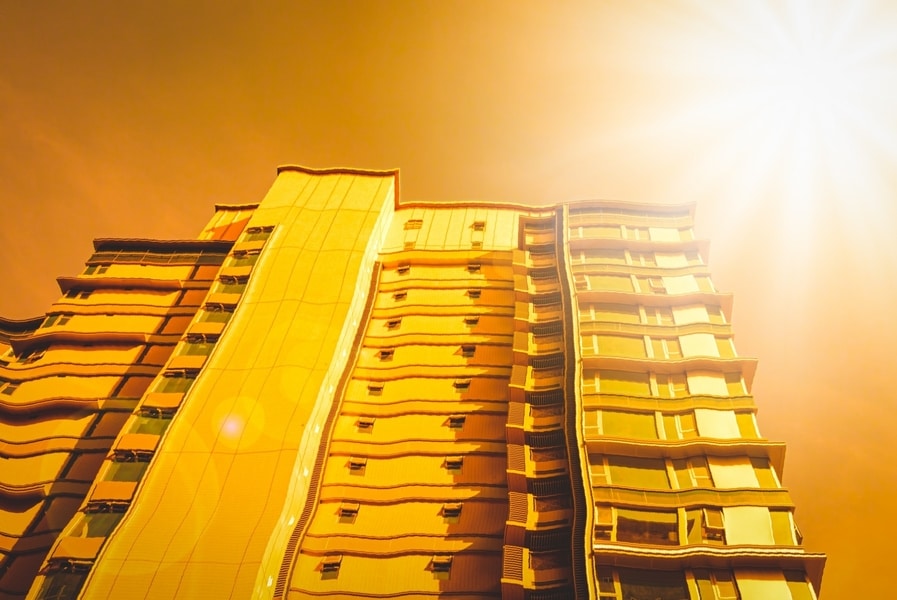ECONOMICS
Pitt civil engineers examine urban cooling strategies using reflective surfaces
If you've ever been in a city's central core in the middle of summer, you know the heat can be brutal--and much hotter than in the surrounding region.
Temperatures in cities tend to be several degrees warmer than in their rural areas, a phenomenon called the Urban Heat Island (UHI) effect. Many cities have been observed to be 2-4ºC warmer than the countryside in virtually every inhabited continent. This phenomenon occurs because urban infrastructure, especially pavements, absorbs a lot of heat as compared to natural vegetated surfaces. This heat pollution causes higher air conditioning and water costs, while also posing a public health hazard. 
One mitigation strategy called gray infrastructure involves the modification of impermeable surfaces (walls, roofs, and pavements) to counter their conventional heating effect. Typical urban surfaces have a solar reflectance (albedo) of 0.20, which means they reflect just 20 percent of sunlight and absorb as much as 80 percent. By contrast, reflective concrete and coatings can be designed to reflect 30-50 percent or more. Cities like Los Angeles have already used reflective coatings on major streets to combat heat pollution, although the solution can be expensive to implement city-wide.
Researchers at the University of Pittsburgh Swanson School of Engineering used a Computational Fluid Dynamics model to find ways to decrease cost and increase usage of cooler surfaces. The paper examined the possibility of applying cooler surfaces to just half the surfaces in a city.
"This could be an effective solution if the surfaces selected were upstream of the dominant wind direction," said lead author Sushobhan Sen, a postdoctoral associate in the Department of Civil and Environmental Engineering. "A 'barrier' of cool surfaces preemptively cools the warm air, which then cools the rest of the city at a fraction of the cost. On the other hand, if the surfaces are not strategically selected, their effectiveness can decline substantially."
This research gives urban planners and civil engineers an additional way to build resilient and sustainable infrastructure using limited resources.
"It's important for the health of the planet and its people that we find a way to mitigate the heat produced by urban infrastructure," said coauthor Lev Khazanovich, the department's Anthony Gill Chair Professor of Civil and Environmental Engineering. "Strategically placed reflective surfaces could maximize the mitigation of heat pollution while using minimal resources."
